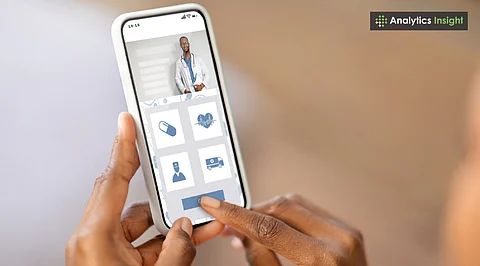

Teladoc, Practo, and others are transforming care through fast, remote consultations and AI tools
Hims & Hers and LifeMD report sharp revenue growth by offering privacy-focused, affordable health plans
Amwell and Practo are expanding across systems and borders, improving global access to virtual care
Telemedicine apps are now a regular part of how people receive medical care. Instead of spending hours at clinics, patients book video consultations, receive medicine deliveries, and manage chronic health conditions through mobile devices. These platforms are fast, cost-effective, and simple to navigate, leading to a rise in their use.
Telemedicine Apps in 2025 offer real-time access to specialists, reducing wait times significantly. Some apps have built a strong presence over the years, while others have gained popularity more recently. The following five telemedicine apps have emerged as leading choices in virtual healthcare, each offering unique features and services.
Also Read: Future of Virtual Assistants and Chatbots in Healthcare
Teladoc Health is one of the most recognized telemedicine companies. It is used for both regular doctor visits and long-term conditions like diabetes or mental health. In 2024, Teladoc earned around $2.57 billion. Even though the company had significant losses that year, its situation improved in 2025. In the second quarter of the year, the loss came down to $32.7 million, and the company earned $631.9 million in revenue.
Virtual Healthcare has emerged as a powerful solution for both rural and urban patients. Hospitals and patients still trust Teladoc. The company has been adding new technology, including AI, to make healthcare faster and more accurate.
Hims & Hers Health started by offering treatments for hair loss and skin issues. Over time, it evolved into a comprehensive medical platform. It now provides services for mental health, sexual wellness, weight loss, and more. The app is popular among young people because the process is simple and private. No clinic visits are needed, and the prices are not very high.
In 2024, the company made $1.5 billion. In the second quarter of 2025, revenue jumped to $544.8 million, which is 73 percent higher than the same time the year before. Profit in that quarter was $42.5 million. These numbers show strong growth and rising demand for the app’s services.
Also Read: Using AI in Healthcare: Don’t Make These 8 Common Mistakes
Practo is one of India’s biggest healthcare apps. It started with appointment bookings but now also offers online consultations, lab tests, and medicine delivery. In the financial year 2023–24, the company earned Rs. 240 crore, which is around $28 million. It also reduced its losses to Rs. 17 crore.
With Online Doctor Consultation Platforms, users can connect with certified physicians without visiting a clinic. Practo is expanding beyond India. Around 20 percent of its earnings now come from international markets. This shows that the platform is becoming useful in other countries as well, especially in places where basic healthcare is harder to reach.
Amwell is not as well-known to users because it mainly works with hospitals and insurance companies. Many people use its services without knowing the company’s name. It builds and runs online healthcare systems for other organisations.
In the second quarter of 2025, Amwell reported $70.9 million in revenue. The company also managed to reduce its financial losses. Amwell focuses on making digital healthcare systems work smoothly for doctors, hospitals, and patients.
LifeMD is a smaller company, but it is growing quickly. It offers services for primary care, weight management, and men’s health. Patients can book appointments, get treatment plans, and talk to doctors without leaving home. The app also focuses on monthly health plans that provide regular support.
Remote Patient Monitoring Tools help doctors track health metrics and offer timely interventions. In 2024, LifeMD earned $212.5 million, which is 39 percent more than the year before. In early 2025, revenue rose by another 49 percent. The company also became profitable for the first time, which shows that its plan is working.
Telemedicine no longer feels unfamiliar. It has become a regular way to access medical care. For skin issues, follow-ups related to diabetes, or therapy sessions for anxiety, these apps make it easier to receive support without long waiting times or the need to travel.
The Best Apps For Telemedicine combine user-friendly interfaces with advanced AI-driven health assessments. The platforms seeing the most success this year are easy to use, widely trusted by patients, and expanding quickly. As features improve and services become more accessible, more people are likely to turn to these apps as their first choice for healthcare.
